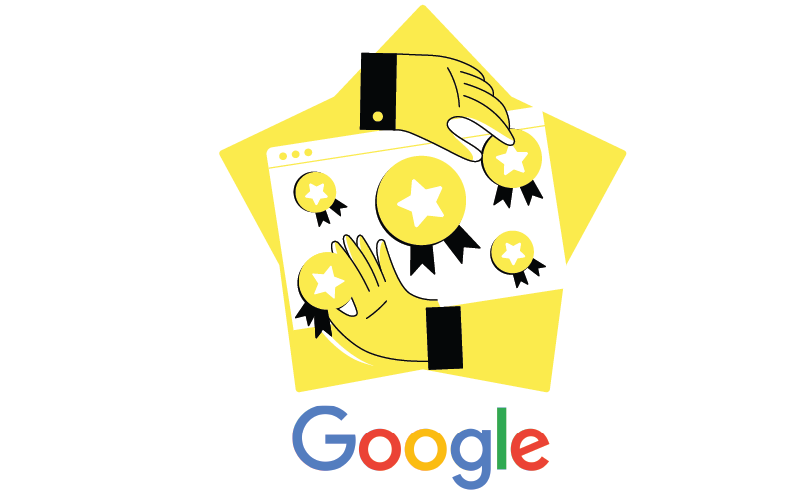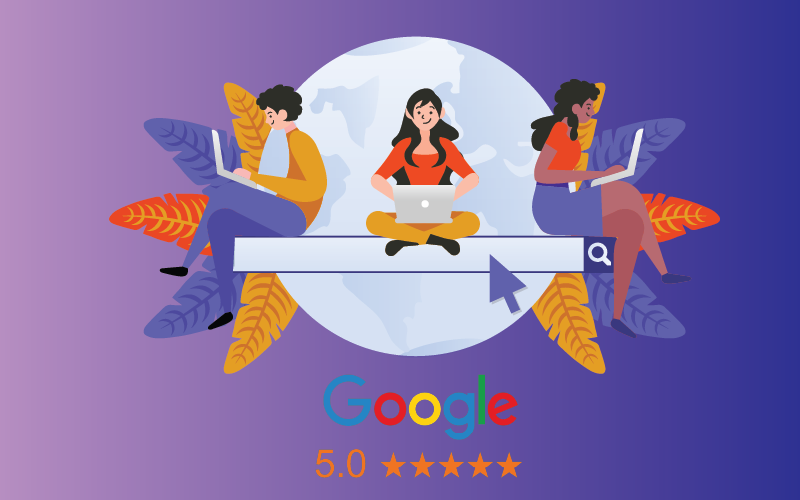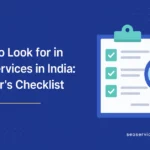Search engines have always been looking for a way to rank pages and tell you what page is more important than another. PageRank is one of the algorithms that Google put together and it has proven to work well with their goals: they give searchers the most relevant results. Everyone knows that SEO is complicated and filled with niche terminology. One thing people don’t want to go too much into detail about is the Google Page Rank algorithm, which has been subject to arguments for well over 20 years now. Even if you’re not sure what it means, you might have heard of how many digital media marketers are worried about PageRank.
Pagerank is pretty complicated stuff if you want to get the full picture & improve it. I’ve summarised here the basic principles though, so read on and we’ll teach you everything.
What is PageRank?
PageRank is one of Google’s algorithms for ranking websites. It determines the quality of your website and where it appears on Google search results. Google uses a lot of metrics to rank pages. The higher your PageRank score is, the more likely it is that your page will rank for a specific keyword. While PageRank isn’t Google’s only metric, it’s still an important factor in ranking.
The link analysis algorithm is complicated, but the general idea behind it is really simple. Let’s take two websites for example Website A is a respected and established company in its field, while Website B is a new company. The algorithm visits Website A more often and will be faster to identify that it’s trustworthy.
Google’s web crawlers come across a recent article written by Website A when they scan web content from across the internet. While they’re analyzing the content on Website A’s new article, they also check for links that point to other websites. In this case, there’s a link on Website A that points to Website B.
Google crawlers have noted that Website A links to Website B. This is data from a high-quality website and so they’re assuming that it’s only linking to other credible websites. Google becomes less suspicious of Website B after associating with it.
As websites collect more links from reputable (quality) sites, their PageRank score will go up. Needless to say, it’s key that the websites linking to you are high quality as one link from a trusted site is worth a thousand links from one that isn’t.
PageRank According to Google
Many SEOs might be surprised to find out that the term ‘PageRank’ wasn’t invented by them. It was a term first coined way back in 1997 by internet inventor and Stanford professor, Larry Page. Google says it as much on its philosophy page. They describe Pagerank like this:
We make detailed assessments of every single page on the web. We look for things in different ways and with lots of depth- including our patented PageRank™ algorithm, which takes into account what other sites think about each page. The more websites there are on the web, the more accurate this approach becomes. Every new site is another point of information and another vote to be counted.
One of Google’s guises is free, fair democratic use of the internet. That said, they don’t play favorites–a vote from a top-market newspaper will probably be weighted more than one from your local radio station.
Google never said exactly how the page rank system works and they are unlikely to reveal it.
The exact details of Google’s PageRank algorithm aren’t known. But we know that it’s a complex algorithm. Here’s for example, Google holding the patent:
The company’s Search Liaisons have confirmed Google still uses this original PageRank algorithm – improved over time.
After running this algorithm, Google assigns a site’s PageRank between 0-65K. Google doesn’t share a site’s score with their users, but they did provide a simplified reference score for Google Toolbar Users. A PageRank of 1 meant you didn’t have many links, and the ones you did have were from other low-quality sites. A PageRank of 10 meant lots of high-quality links pointing to your site. Google would openly display this number to anyone who downloaded their free toolbar in the early 2000s, showing them that Google valued their website.
If you’re one of those SEOs that are all over the internet these days, I know what you’re probably thinking to yourself – “Too bad!”
20 years ago, Google began substituting the PageRank score with a newly-imagined metric that remains private to this day. Google has not made public what the new algorithm will be based on. That might seem frustrating, but there’s a good reason why Google had to hide PageRank behind a black box. To see why the change happened, let’s go through a quick history of PageRank.
A History of Google PageRank

Google isn’t usually very open about how PageRank works, but the history of the algorithm can give us some valuable insight into how it functions. Let’s take a look at some of the most important events in PageRank’s history.”
1996: The Early Beginnings
The story behind PageRank started long before Google was even created. Robin Li created the first algorithm that resembled PageRank in 1996. It wasn’t a patent and it was never intended for use by Google. RankDex was used to score websites based on how many other sites linked to them – the more the site was linked from, the better it performed.
At around the same time, two Stanford University Ph.D. students, Larry Page and Sergey Brin were working on a search algorithm to help people find information on the world wide web. They used all the information available to them – including Robin Li’s research.
After 2 years of work, Page and Brin couldn’t come up with a good name for their search algorithm so they named it after themselves. It’s fascinating to think that the technology behind the world’s most popular search engine wasn’t even developed by Google!
A couple of years went by, and Robin Li and his RankDex creation had gone unnoticed. All that hard work was not for nothing! He went on to found Batchu, which is the most popular search engine in China.
2000: Introducing the Google Toolbar
The internet was still relatively new in the early 2000s – in fact, only about half of all households even had a computer at that point. But the popularity of the internet (and searching on the internet) was growing fast. In 1998, the Google search engine was processing 10,000 searches per day. In 1999, Google was processing over 3 million searches per day. In 2000, Google was processing 42 million searches per day.
To help these searchers and cement their position as a leader in a new, booming industry, Google released the Google Toolbar. It provided a lot of capabilities that were super useful for its time, like the ability to access bookmarks or search Google without navigating to Google.com.
However, it also provided users with the ability to check the authority of a website they were visiting with a PageRank score between 1 and 10.
In the 2000s, businesses and hobbyists started to see the value of their page appearing in a prominent position on Google Search. For early SEOs, there was a clear roadmap: PageRank influenced how your site ranked on Google. PageRank was decided by how many links you had. And you could get a simple metric to help you accurately track your PageRank score through the toolbar.
Of course, people immediately started gaming the system. During this time, businesses started negotiating with each other to trade links. Businesses bought hundreds or thousands of low-quality links from “link farms” for a small fee. Black hat SEO was running amok. Google quickly realized that they needed to shake things up, or risk a poor user experience.
Google changes the algorithm for PageRank in 2006.
Manipulating PageRank has been a popular practice since the 90s but luckily Google patched it up by 2006. They filed an updated patent and made it super secretive. The original PageRank algorithm was already retired in 2006, which makes 2006 a significant year for both Google & PageRank.
A new patent was recently published, and it offered some insight into how this process of trusting external links might work. By looking at trusted sites like the New York Times and Google Directory, other sites linked to those pages would be given similar trust. Sometimes, when you click on a link, they would pass a little bit of their credibility to the other site.
This made it more difficult to engage in link trading and link farming (although those dodgy tactics never fully went away). Google has been making tweaks to its algorithm to fight spammy practices while adding more functions like Rankbrain and Core Web Vitals.
This year is the first time PageRank’s patent will expire.
It’s been a while since 2006 and there’s still not much known about the updates made to Google’s algorithm. Most of their patents have expired by now, with Google failing to renew them. (2010). While Google’s liaisons have reported that the original algorithm is still in use, the change of patents suggests that the original algorithm has been extensively modified nonetheless.
What’s up with the Google PageRank algorithm? What does it do?
Google confirmed in 2020 that PageRank is still one of the factors that help Google sort search results. There’s not much information out there on how it works, but John Mueller has reassured SEOs and Search Advocates alike. The value of a single high-quality link will drastically outweigh the safety and reputation benefits of a million poor-quality ones. I’ve mentioned this before, but Mueller got into it at an SEO open office hours event in 2021.
Keep in mind that while PageRank may be a ranking factor, Search Advocates have confirmed that it matters more for some searches than others. It’s not clear what types of sites PageRank helps, but it makes sense that sites offering medical advice might need a higher PageRank to show up than a site only offering business-related advice.
If you look back at the history of PageRank, one thing is clear: it’s not as influential as it once was on search engine results pages. Today Google is the best search engine and they the intention to serve their users with high-quality content. PageRank is a clue for the content quality however it isn’t enough because Google recognizes that other factors are important, too.
There are a lot of different factors that determine how Google ranks a webpage.
It can be tough to know what Google is looking for about SEO. They want to avoid people gaming their algorithm, so they typically don’t share how they rank sites & videos. SEOs still do a lot of testing to get the most effective and will continue to refine their strategies as they gather more data. With that in mind, we can look at some short-term decisions and what has worked so far:
One of the most important factors to take into account is the quality of the website you’re linking to.
One of the most important things to consider when you’re trying to build your PageRank is where your website gets links from. The more high-quality sites link to you, the higher your PR will be. This is because of high-quality sites like giving out links to another high-quality sites.
Poor-quality websites that point to your own can hurt your rank. It’s okay if you have a few spammy links going to your site, or if you’ve been ranking for low-quality keywords. These won’t affect your rank in the same way as a website with no links going anywhere. Google offers some logic to protect against that kind of situation. But don’t buy a bunch of links from sources you don’t trust. That could either lower your page rank or, at the very best, leave it unchanged.
2. Internal Links
Internal links, which let you show people what’s on the other pages of your website from your website, do help establish an authority for that page. Unfortunately, they don’t increase your website’s overall PageRank rating. However, following a good internal linking structure will stop your PageRank score from dominating your site and evenly distributing it instead.
3. Clickthrough Rate
It is unclear whether the clickthrough rate has a confirmed ranking signal in all cases, but many SEOs speculate that it may, as Google’s PageRank algorithm has used a “Reasonable Surfer Model” in the past. This method looks at how links within a document correspond with one another and how that affects the actions of the reader.
Google has not made a lot of public statements about their Reasonable Surfer Model, but they keep extending the patent- so they’re committed to this idea. There’s evidence that a user’s behavior on a page that points to you matters. Many SEO experts interpret this behavior as their clickthrough rate but it may refer to other things too.
4. Anchor text
Anchor text doesn’t affect your page rank. However, the context surrounding it can be very important to understanding how Google wants to rank your content. In addition to saving time, AI writers can have a great effect on your user experience. They’re more likely to click links surrounded by interesting and related content, which also has some cool results!
Even though anchor text might not be a confirmed page rank factor, there are a few SEO best practices you should keep in mind. For example, incorporating relevancy for the search term within your link’s anchor text can help you boost your rankings.
5. Follow/ No follow links
This is often cited as a PageRank factor, and this was confirmed in a study by Google. It’s also worth remembering that NoFollow links won’t pass PageRank either. However, evidence suggests that this won’t be a significant contributor to PageRank from 2022 onwards. Now, Google considers nofollow links as just a “hint” so it might still pass PageRank anyway. The decision might have been to cut back on abuse.
Can you verify your PageRank?
Google does not have any buttons which show your Page rank, yet.
If you want an estimate, some free tools can give you some insight. For example, Moz provides a metric called Domain Authority and SEMRush has an Authority Score metric as well. Authority and Domain Authority aren’t the same thing. DA doesn’t use Google’s proprietary PageRank algorithm or take into account the number of links to a site because other parts of DA do that job. It may be helpful to monitor, but it isn’t an accurate representation of PageRank or how “important” a site is.











